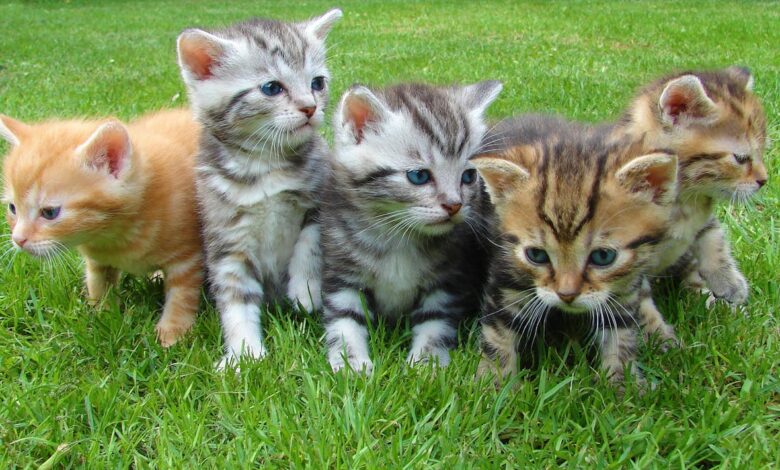What Is a Balanced Diet for Cats

Cats, those majestic little carnivores that grace our homes with their presence, have dietary needs that are as unique as their personalities. If you’ve never taken care of a cat, you may be wondering what constitutes a balanced diet for them. Luckily, it isn’t very complicated and you can easily give your cat the nutrition they deserve.
Unlike dogs and humans, who can adapt to a variety of diets, cats are obligate carnivores. This means that their survival depends on nutrients found specifically in animal products. Let’s break down the essential components that every cat’s diet should have:
High-Quality Protein
Protein is the cornerstone of a cat’s diet. It’s not just about quantity but quality. Cats need proteins that are high in essential amino acids, the building blocks that support muscle maintenance, growth, repair, and normal body functioning. One amino acid, taurine, is particularly crucial and is found only in animal tissue. A deficiency in taurine can lead to serious health issues, including heart problems and blindness.
Essential Fatty Acids
Fats provide energy, help absorb certain vitamins, and maintain healthy skin and a luxurious coat. Omega-3 and omega-6 fatty acids are particularly important for maintaining overall health. But, as with everything, balance is key. Too much fat can lead to obesity, while too little can cause health problems.
Vitamins and Minerals
Vitamins and minerals are vital for supporting a range of bodily functions, from maintaining healthy skin and coat to ensuring proper nerve function and vision. Each vitamin and mineral plays a unique role, and deficiencies can lead to health issues. For example, Vitamins A, D, E, K, C and B should be present for a pregnant cat before it gives birth.
Moisture
Cats are notorious for their low thirst drive, which dates back to their desert-dwelling ancestors. Hence, moisture in their diet is crucial to prevent dehydration and support kidney and urinary tract health. Wet foods can be especially beneficial in meeting this need.
Debunking Common Cat Food Myths
Now, let’s tackle some myths that have been prowling around, confusing well-meaning cat owners.
Myth: “Cats can thrive on a vegan diet.”
Truth: Cats require certain nutrients that are only found in animal products. A vegan diet can lead to severe nutritional deficiencies.
Myth: “All commercial cat foods are filled with harmful fillers.”
Truth: While some cat foods may contain unnecessary fillers, many high-quality commercial foods are formulated to meet all of a cat’s nutritional needs. The key is to understand how to read the labels.
Reading and Understanding Pet Food Labels
Speaking of labels, let’s pounce on some tips to navigate the jungle of pet food packaging:
Identify the Protein Source: The first ingredient should be a high-quality protein source, such as chicken, beef, or fish. Meat meal is a lower-quality protein source, so stay away from cat food that has this listed as the first ingredient.
Understand By-Products: While often viewed negatively, by-products can be nutritious parts of animals not typically consumed by humans, such as organs, which are rich in nutrients.
Dry vs. Wet vs. Raw Diet
Dry Food
Dry food, or kibble, is often praised for its convenience and longevity. It’s easy to store, doesn’t spoil quickly, and can be left out for cats to graze on throughout the day, which suits many pet owners’ lifestyles. However, it’s not just about convenience. Let’s break down the pros and cons:
Pros:
- Long Shelf Life: Once opened, it remains fresh for longer periods.
- Dental Health: Some types of dry food are formulated to help reduce tartar buildup.
- Cost-Effectiveness: Generally, dry food is more economical than wet or raw diets.
Cons:
- Low Moisture Content: Cats may not get enough hydration from dry food alone, which can lead to health issues.
- High in Carbohydrates: Some kibble contains higher levels of carbohydrates, which may not be ideal for all cats, especially those prone to obesity or diabetes.
Wet Food
Wet food is a great way to ensure your cat stays hydrated, especially if they’re not keen on drinking water. It’s often more palatable, which can be a big plus for picky eaters.
Pros:
- High Moisture Content: Excellent for hydration and supporting kidney and urinary tract health.
- Reduced Carbohydrates: Generally contains fewer carbohydrates than dry food.
- Variety: Comes in many textures and flavours, appealing to different preferences.
Cons:
- Perishability: Once opened, it needs to be consumed quickly or refrigerated.
- Cost: Typically more expensive per meal than dry food.
- Dental Concerns: Doesn’t provide the same dental benefits as some dry foods might.
Raw Diets
Raw diets aim to mimic a cat’s natural diet in the wild, consisting of raw meat, bones, and organs. Proponents argue it’s the most natural and healthful option, but it’s not without controversy.
Pros:
- Natural Eating Behaviour: Mimics the prey-based diet of wild felines.
- High Protein, Low Carb: Often more aligned with a cat’s nutritional needs.
- Palatability: Many cats prefer the taste of fresh, raw meat.
Cons:
- Food Safety: Risk of bacterial contamination and foodborne illness.
- Nutritional Balance: Requires careful planning to ensure it meets all nutritional needs.
- Cost and Convenience: Can be more expensive and requires significant preparation time.
When Health Issues Dictate Diet
Conditions like obesity, diabetes, and kidney disease require special dietary considerations. For instance, overweight cats need a carefully controlled diet to lose weight safely, while diabetic cats benefit from a low-carbohydrate diet.
Conclusion
Your commitment to learning about your cat’s nutritional needs shows your deep care and love for your furry friend. Keep up the good work, and always remember that when it comes to your cat’s health, you’re not alone. Veterinarians, pet nutritionists, and a wealth of resources are at your fingertips to help guide you on this journey.
Now, take a moment to celebrate your new level of feline nutrition expertise. You’re well on your way to becoming a superhero in your cat’s eyes – if you weren’t already one.



